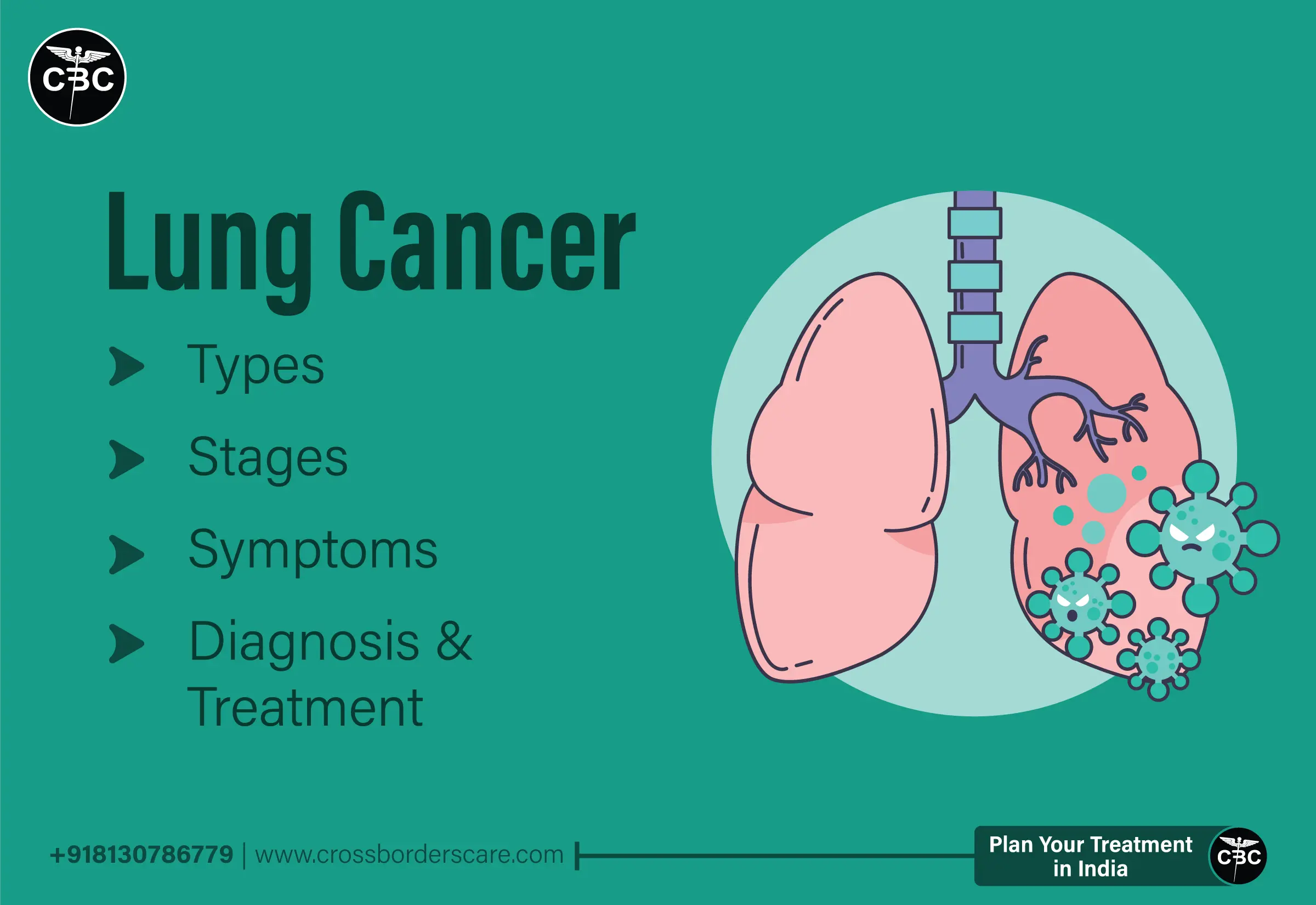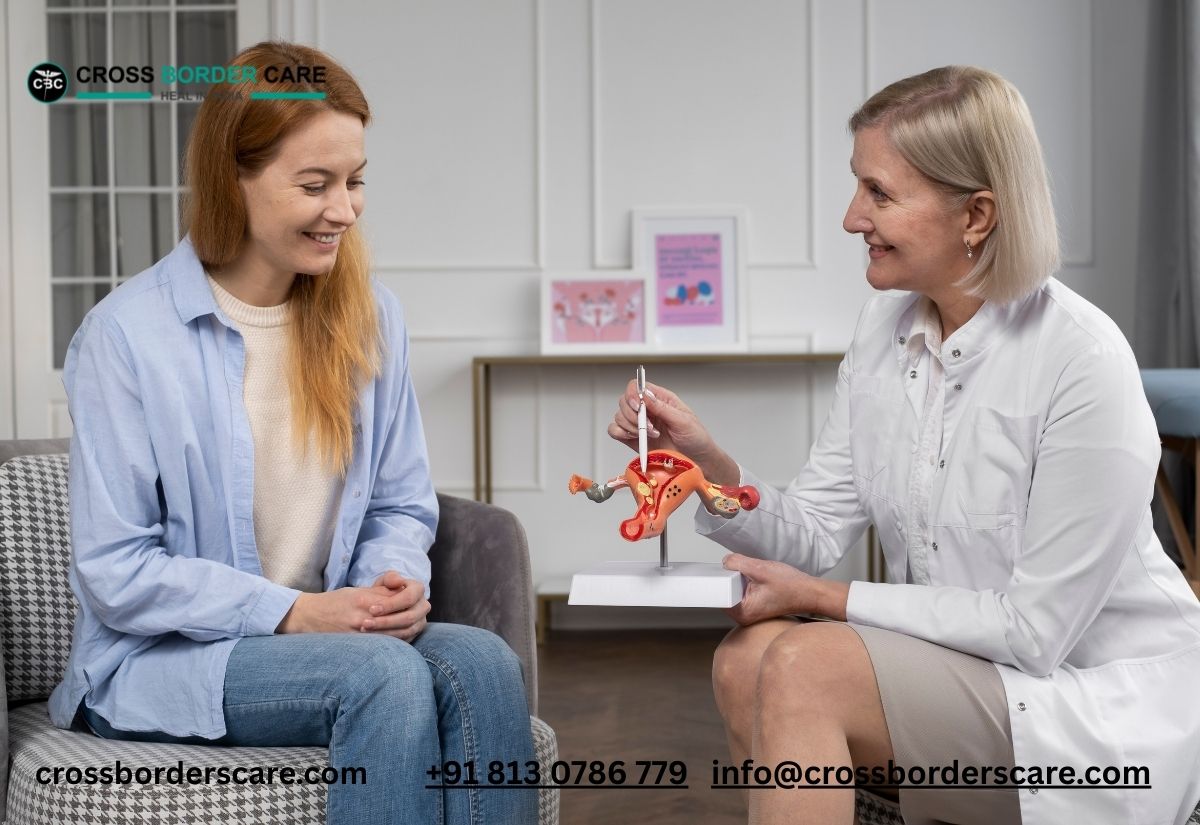Lung cancer is a deadly illness caused by the uncontrolled growth of cells in the lung tissues. Millions of people die from it worldwide, making it one of the most prevalent types of cancer. Long-term exposure to carcinogens such as radon gas, environmental contaminants, and cigarette smoke usually leads to the development of lung cancer. Small cell lung cancer and non-small cell lung cancer are the two main forms of lung cancer, each with distinctive characteristics and therapeutic choices. Lung cancer symptoms include fatigue, weight loss, shortness of breath, chest pain, and chronic coughing. Successful lung cancer treatment depends heavily on early detection. Robotic lung cancer treatment in India is a popular and effective treatment method.
Types of Lung Cancer
There are two main types of lung cancer: non-small cell lung cancer and small cell lung cancer.
Non-Small Cell Lung Cancer (NSCLC): Making up nearly 85% of all occurrences of lung cancer, NSCLC is the most prevalent kind. It is further broken down into various types of subtypes:
- adenocarcinoma: The most prevalent subtype, adenocarcinoma, frequently affects non-smokers or former smokers. It typically begins in the lungs’ outermost regions and can migrate to the lymph nodes.
- Squamous Cell Carcinoma: This subtype frequently appears in the bronchial tube lining. It may result in symptoms like coughing and shortness of breath and is frequently linked to a history of smoking.
- Large Cell Carcinoma: This subtype is less frequent and has the tendency to advance rapidly. It can occur anywhere in the lung and is frequently considered to have a dismal prognosis.
Depending on the cancer’s subtype and stage, NSCLC treatment options include surgery, radiation therapy, chemotherapy, targeted treatments, and immunotherapy.
Small cell lung cancer (SCLC): The less frequent but more dangerous kind of lung cancer is known as small cell lung cancer (SCLC). It frequently spreads and grows quickly. The two stages of SCLC are limited, which affects only one lung, and extensive, which affects more than one lung. They are significantly linked to cigarette use.
SCLC is frequently treated with chemotherapy and radiation therapy due to its aggressive nature. Since cancer has typically spread by the time of detection, surgery is rarely an option. Robotic lung cancer treatment in India can also be used for this.
Stages of Lung Cancer
A system called lung cancer staging is used to describe how far the disease has gone throughout the body. It aids medical professionals in selecting the best course of treatment. Each stage has specific treatment options, like robotic lung cancer treatment in India, with earlier stages often having a better prognosis and a wider range of treatment options.
- Stage 0: Also referred to as carcinoma in situ, this stage denotes the presence of abnormal cells exclusively in the lining of the airways and excludes the invasion of deeper lung tissues.
- Stage I: The cancer has not progressed to the lymph nodes or any distant sites and is contained to the lung.
- Stage II: Though not at distant sites, the tumor may have gotten bigger and spread to surrounding lymph nodes.
- Stage III: In this stage, the cancer has spread to the lymph nodes close by and may even have infiltrated surrounding tissues like the diaphragm or chest wall. Stage III is further broken down into sub-stages, where Stage IIIA denotes lymph node involvement on the same side of the chest and Stage IIIB denotes lymph node involvement on the other side.
- Stage IV: At this point, the cancer has spread to distant organs such as the brain, liver, bones, or other sections of the body. This lung cancer is regarded as progressed or metastatic.
Symptoms
The type of lung cancer, its stage, and individual circumstances can all affect the symptoms of lung cancer. Lung cancer patients’ prognoses can be considerably enhanced by early detection and therapy. An efficient way for treating lung cancer is robotic lung cancer treatment in India. Typical signs include:
- Persistent cough: A persistent cough is frequently an early indicator of lung cancer. It either doesn’t go away or gets worse over time.
- Breathlessness: Breathlessness and breathing difficulties can result from lung malignancies that obstruct or constrict airways.
- Chest Pain: Chest pain or discomfort brought on by lung cancer may get worse when you cough, laugh, or take heavy breaths.
- Unexpected weight loss: A number of problems, including lung cancer, might be indicated by sudden and unexplained weight loss.
- Fatigue: Even with little exercise, feeling exceedingly exhausted or weak is a common symptom.
- Wheezing: Narrowed or obstructed airways can cause a whistling or wheezing sound when breathing.
- Hoarseness: Lung tumors that are pushing on the nerves or airways can cause vocal changes, such as hoarseness.
- Frequent Infections: Lung cancer patients may have weakened immune systems, which makes them more vulnerable to respiratory infections like pneumonia and bronchitis.
- Coughing Up Blood: When lung cancer is more advanced, coughing up blood or bloody mucus might be a sign.
- Loss of Appetite: As cancer gets worse, many people experience a loss of appetite and accidental weight loss.
- Pain in bones or spine: The spine, ribs, or other bones may experience bone pain if the malignancy has spread to them.
Diagnosis
The diagnosis of lung cancer involves several steps to accurately determine the disease’s presence, type, and stage. It typically begins with a thorough medical history and physical examination. If lung cancer is suspected, various imaging tests such as chest X-rays, CT scans, and PET scans are conducted to visualize the lungs and identify any abnormalities or tumors.
- A definitive diagnosis usually requires obtaining a tissue sample for examination. This can be done through procedures like bronchoscopy or a needle biopsy. Sometimes, a surgical biopsy may be necessary to extract a larger tissue sample for examination.
- Once a tissue sample is obtained, a pathologist analyzes the cells under a microscope to determine if they are cancerous and, if so, what type of lung cancer it is.
- To assess the extent of the disease, staging is conducted to determine if the cancer has spread beyond the lungs and to what extent. Staging helps healthcare professionals to determine the best treatment approach. Lung cancer is categorized into stages ranging from I to IV, with higher stages indicating more advanced disease. Modern techniques like robotic lung cancer treatment in India can also be used.
Treatment
The type of lung cancer, its stage, the patient’s general health, and personal preferences are only a few of the variables that affect how the disease is treated. Modern approaches like robotic lung cancer treatment in India are becoming increasingly popular. Treatment strategies comprise:
- Surgery: During surgery, the tumor and adjacent lymph nodes are removed. It works well for non-small cell lung cancer in its earliest stages.
- Radiation therapy: High-energy rays are used in radiation therapy to target and kill cancer cells. It can be combined with other treatments for advanced stages of lung cancer or used as the main treatment for early-stage lung cancer.
- Chemotherapy: This treatment uses medication to either kill or slow the growth of cancer cells. It can be administered prior to surgery to reduce tumor size, following surgery to eliminate cancerous cells still present, or for advanced lung cancer to manage symptoms.
- Targeted Therapy: Drugs that specifically target genetic abnormalities or proteins that fuel the proliferation of cancer cells are known as targeted treatments.
- Immunotherapy: Immunotherapy works by enhancing the immune system’s capacity to identify and combat cancer cells.
- precision medicine: Using precision medicine, treatment is customized according to the unique genetic composition of a patient’s tumor. It can assist in locating more effective, individualized therapy solutions.



















